
Monday, 11 November 201908:00 | Conference Registration, Materials Pick-Up, Morning Coffee and Tea | |
Session Title: Conference Opening Session -- Emerging Trends and Themes in Cell & Gene Therapy |
| | 08:45 | 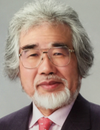 | Conference Chair Chairman's Welcome and Introduction to the Conference
Norio Nakatsuji, Chief Advisor, Stem Cell & Device Laboratory, Inc. (SCAD); Professor Emeritus, Kyoto University, Japan
|
| 09:00 | 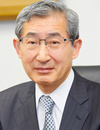 | Keynote Presentation Current Status and Future Directions of CAR-T Cell Therapy
Keiya Ozawa, Professor Emeritus and Visiting Professor of the Division of Immuno-Gene & Cell Therapy, Jichi Medical University, Japan
Adoptive immunotherapy with CAR (chimeric antigen receptor)-T cells is a promising cell-based anticancer therapy for hematological malignancies. CARs are hybrid proteins consisting of an extracellular single chain fragment of variable region (scFv) fused to intracellular lymphocyte signaling domains CD28 or 4-1BB, coupled with CD3 to mediate T cell activation. CD19-targeted CAR-T cell therapy showed surprising clinical efficacy against relapsed/refractory acute lymphoblastic leukemia and malignant lymphoma. In 2017, this novel treatment was approved by FDA in USA. Cytokine release syndrome (CRS), immune effector cell-associated neurotoxicity syndrome (ICANS), and tumor lysis syndrome (TLS) are adverse effects that appear at an early stage following the infusion of CAR-T cells. Delayed onset toxicity of CD19-CAR-T cell therapy is the serum immunoglobulin deficiency due to destruction of normal B cells (on-target, off-tumor reaction). A next promising target antigen is considered to be BCMA (B cell maturation antigen), and BCMA-CAR-T cell therapy has been shown to be effective against multiple myeloma. On the other hand, the efficacy of CAR-T cell therapy for solid tumors has been unclear. There are several issues to be solved, and CAR-T for solid tumors should be combined with other therapeutic technologies. Currently, genome editing technology is rapidly progressing, and its application to gene-modified T cell therapy is being conducted; e.g. 1) TCR gene knockout for allogeneic (universal) CAR-T cell therapy and 2) PD-1 gene knockout of CAR-T cells (immune checkpoint blockade) to increase its cytotoxic activity. Another major issue is that gene therapies recently approved in Europe and the U.S. are extremely expensive. |
| 09:40 | 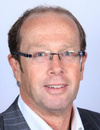 | Keynote Presentation Development of an Allogeneic iPSC-derived Cell Therapy Product
Ross Macdonald, Chief Executive Officer and Managing Director, Cynata Therapeutics Ltd, Australia
From the first description of reprogramming methods able to generate pluripotent cells from adult somatic tissues in the middle of the last decade, the science and clinical potential of induced pluripotent stem cells – iPSCs – has taken many important steps forward. The use of iPSCs in modelling and investigating human diseases, as well as for screening drugs, has already been enormously enlightening. But it is perhaps their use in the development of therapeutic products where the greatest opportunity for iPSCs arises. Notably iPSCs share many properties with embryonic stem cells (ESCs) but because iPSCs are not derived from embryos they are not associated with the substantial ethical controversies that have overshadowed ESC research and which will most certainly influence commercial development of ESC-derived therapeutic products. iPSCs are now being used to develop a broad range of cell therapy products, including myocardial tissue for potential use to effect recovery post-myocardial infarction, retinal pigmented epithelium for potential use in age-related macular degeneration and mesenchymal stem cells (MSCs) for a broad range of disease targets. The latter cell type is the most advanced, with Cynata Therapeutics Ltd, an Australian biotechnology company, completing in 2018 a Phase 1 clinical trial in acute steroid resistant graft-versus-host disease (GvHD) with a unique allogeneic iPSC-derived MSC cell therapy product. This clinical trial, the first in the world using an allogeneic iPSC derived product, demonstrated very encouraging safety and efficacy, paving the way for a Phase 2 trial in this and further indications. The trial confirms a viable and clinically relevant process for large scale manufacture of a highly consistent cell therapy product without the challenges presented by requiring multiple donors and massive expansion of the finished product. Data from the Cynata trial in GvHD and the pathway to trial approval and beyond will be discussed. |
| 10:20 | 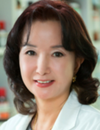 | Keynote Presentation Optimizing the Delivery of Anticancer Immune Response-Inducing Oncolytic Adenovirus and Adjuvant Immunotherapeutic
Chae-Ok Yun, Professor, Department of Bioengineering, Hanyang University, Korea South
Currently, intratumoral injection of an oncolytic adenovirus (Ad) remains the conventional administration route in clinical trials. Nonetheless, the locally administered Ad disseminates to the surrounding nontarget tissues and has short biological activity due to immunogenicity of Ad, which inadvertently promotes rapid clearance and insufficient intratumoral retainment of therapeutics. To this end, we developed biocompatible and biodegradable hydrogels to enhance the therapeutic efficacy of oncolytic Ads via single intratumoral administration. A hydrogel-based intratumoral delivery of oncolytic Ads led to prolonged viral retainment within tumor tissues and restricted nonspecific shedding to normal tissues (up to 161.4-fold higher retainment than naked oncolytic Ad). Notably, hydrogel systems attenuated oncolytic Ad-mediated antiviral immune response, which can cause adverse inflammatory response, while preserving the viruses’ ability to induce robust antitumor immune response. One of the hydrogel was capable of efficiently co-delivering and protecting both therapeutic dendritic cells and oncolytic Ad in tumor tissues, thus potentiating the robust antitumor immune response by combination therapy regimen. Collectively, hydrogel-based delivery system enables biological activity of both immunotherapeutic agents could be preserved over a considerable time period in immunosuppressive and hostile tumor microenvironment that significantly diminishes the efficacy of immunotherapeutics. A delivery system, which simultaneously modulates both antiviral and antitumor immune response in a favorable manner to the potency and safety of oncolytic virotherapy in a complex immunological microenvironment of tumors, is of great importance as it may finally enable oncolytic virotherapy to reach its full potential and achieve optimal therapeutic outcome against clinical cancer. |
| 11:00 | Morning Coffee and Tea Plus Networking Break | 11:30 | First Commercial Available Gene Therapy Drug “Collategen” in Cardiovascular Disease
Ryuichi Morishita, Professor of Clinical Gene Therapy, Osaka University School of Medicine, Japan
Gene therapy has emerged as a novel therapy to promote angiogenesis in patients with critical limb ischemia (CLI) caused by peripheral artery disease. We have focused on hepatocyte growth factor (HGF) as pro-angiogenic factors. In the clinical trials of phase III, the naked plasmid DNA encoding HGF showed the safety and their potential for symptomatic improvement in CLI patients. Improvement rate was 70.4 % in HGF and 30.8% in placebo in Fontaine III patients (P=0.014). HGF gene therapy achieved a significantly higher improvement rate of ischemic ulcers compared with placebo (100% vs. 40%, P=0.018). No major safety problems were observed. Based on phase III data, in this year, HGF will be launched in Japan market as the first gene therapy drug. | 12:00 | 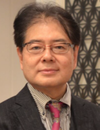 | Keynote Presentation Exosome-based Cell Free Therapy
Takahiro Ochiya, Professor, Tokyo Medical University, Japan
Extracellular vesicles (EVs) play important roles in intercellular communications via their content molecules, and mimic, at least in part, the roles that are played by their originating cells. Consistent with this notion, an increasing number of reports have suggested that EVs including exosomes derived from mesenchymal stem cells (MSCs), which are therapeutically beneficial to a wide range of diseases, can serve as drugs to treat multiple diseases. EVs contain a variety of molecules, including proteins, microRNAs, and mRNAs, and are associated with biological processes in a content molecule-dependent manner. In this presentation, it will be reviewed the latest reports regarding the therapeutic potential of MSC-EVs by focusing on the underlying molecular mechanisms of their effects. Specifically, it will be notified the effects of MSC-EVs in terms of their content molecules and of the tissue recovery processes endowed by these molecules for exosome-based cell-free therapy. |
| 12:40 | Networking Lunch, Exhibit and Poster Viewing | |
Session Title: Advances in Cell Therapy |
| | 13:30 | 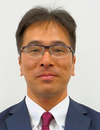 | Keynote Presentation Preclinical Transplantation Study of iPS Cell-Derived Cardiomyocytes in Non-Human Primate
Yuji Shiba, Professor, Department of Regenerative Science and Medicine, Shinshu University, Japan
Induced pluripotent stem cells (iPSCs) have promising potential as a source of autologous patient-specific cardiomyocytes for cardiac repair, obviously providing a major benefit in terms of immune rejection. However, autologous transplantation comes with substantial challenges related to manufacturing and regulation. Although major histocompatibility complex (MHC)-matched allogeneic transplantation is a promising alternative strategy, surprisingly few immunological studies have been carried out with iPSCs. Here, we established an allogeneic transplantation model using cynomolgus monkey, whose MHC structure is identical to that of humans. iPSCs were generated from fibroblasts from an animal with a homozygous MHC haplotype (HT4), and the cells were differentiated into cardiomyocytes (iPSC-CMs). Five HT4 heterozygous monkeys were subjected to myocardial infarction followed by direct intramyocardial injection of the iPSC-CMs. The grafted cardiomyocytes survived for 12 weeks with no evidence of immune rejection under treatment of clinically relevant doses of methylprednisolone and tacrolimus, and they showed indisputable electrical integration with host cardiomyocytes as assessed by use of our novel fluorescent calcium indicator, G-CaMP7.09. In addition, transplantation of the iPSC-CMs improved cardiac contractile function at 4 and 12 weeks post transplantation; however, the incidence of ventricular tachycardia was transiently but significantly increased when compared to the vehicle-treated control. MHC-matched allogeneic transplantation of iPSC-CMs regenerates infarcted non-human primate heart. Further research to control post-transplant arrhythmias is warranted. |
| 14:10 | Clinical Application of iPS Cell Therapy For Parkinson’s Disease
Asuka Morizane, Assistant Professor, Center for iPS Cell Research and Application (CiRA), Kyoto University, Japan
Jun Takahashi, Professor, Kyoto University, Japan
The innovation of induced pluripotent stem cells (iPSCs) and previous embryonic stem cell (ESC) technologies are drawing attention to their application for regenerative medicine. Parkinson’s disease (PD) is one of the most promising target diseases based on the history of fetal nigral transplantation in clinics. The technology of iPSCs offers a limitless and more advantageous donor source than aborted tissue. One of the advantages is possibility of preparing immunologically compatible donor cells from self-derived or allogeneic iPSCs. We have successfully established a protocol for donor induction with clinically compatible grade and have transplanted these neurons into PD models of mice, rats, and cynomolgus monkeys as preclinical studies. Based on these research results, the clinical trial of cell therapy for PD with iPS cells started since 2018. The presentation will include the recent research results and the proceedings of the clinical trial. | 14:40 | Therapeutic Considerations of Mesenchymal Stromal Cells
Ling-Mei Wang, President and COO, Steminent Biotherapeutics, Taiwan
Mesenchymal Stromal Cells (MSCs), with its unique anti-inflammatory and immunomodulatory functions, have been widely considered as a viable drug agent for many unmet or underserved disease indications. Anyhow challenges remain before we can see more popularized clinical applications. Some critical dimensions include the high level of biological complexities, regulatory requirements, and manufacturing scale-up. This presentation will have an overview of some essential issues to be considered, along with suggested approaches in developing viable clinical use of MSCs. Steminent Biotherapeutics, with its proprietary allogenic stem cell technologies, will present some of the key findings of utilizing MSC-based treatments on Spinocerebellar Ataxia (SCA) and Acute Liver Failures (ALF), both are debilitating medical needs without effective options. | 15:10 | Afternoon Coffee and Tea Break and Networking | |
Session Title: 3D-Culture, Organoids and 3D-Bioprinting -- An Emerging Toolbox |
| | 15:40 | Challenge and Solution of Cellular Pharmacokinetic Considerations For Cell Therapy
Thai-Yen Ling, Associate Professor, National Taiwan University, Taiwan
In the field of cell therapy, application of cells is not only regarded as “a treatment protocol", but also to consider cells as a medical product: “the cell drugs". However, different to the drugs of small molecular, which have been regulated by well-established evaluation process of preclinical pharmacokinetic/pharmacodynamic (PK/PD) studies in order to apply for the investigational new drug application (IND) and new drug application (NDA), methods used to assess the bio-distribution of transplanted cells and related metabolic information and therapeutic effect mechanisms are still limited. Our study demonstrated that fluorescent nanodiamonds (FND) labeling techniques of cell toward accurate quantification and bio-distribution for cell-transplantation in PK/PD studies may substitute for radiographic calibration, Q-PCR and immunohistochemical analysis for PK/PD in preclinical animal studies. FND has the properties of high biocompatibility, non-toxicity, low chemical activity and stable optical properties. The technique can be applied to different kind of immune cells, stem cells, and any other cells using for cell therapy. Taken altogether, transplanted cells by FND labeling could be accurately located and quantified for the distribution of experimental animals in vivo, and the techniques will provide the essential information of cellular PK/PD evaluation in preclinical studies of cell therapy to assist IND process for cell drug development. | 16:10 | 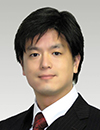 | Keynote Presentation Cell Fiber Technology for Cell Therapy
Shoji Takeuchi, Professor, Center For International Research on Integrative Biomedical Systems (CIBiS), Institute of Industrial Science, The University of Tokyo, Japan
The cell fiber was produced in a double coaxial laminar flow microfluidic device. The core stream of cells suspended in ECM sol and the shell stream of sodium alginate sol form a core-shell laminar co-flow in the device; the flow of Na-alginate sol becomes a gel at the point where it merges with the sheath stream of calcium chloride solution. As a result, a Ca-alginate shell with the cells and ECM sol in the core can be continuously generated on a meter-length scale. The three-dimensionally cultured cells in the fiber show excellent intrinsic functions. When with myocytes, endothelial, and nerve cells, they showed the contractile motion of the myocyte cell fiber, the tube formation of the endothelial cell fibers and the synaptic connections of the nerve cell fiber, respectively. By using microfluidic handling, higher-order assembly of fiber-shaped 3D cellular constructs can be performed; in particular, mechanical weaving of cell fibers with our lab-made microfluidic weaving machine provides a woven "cell fabric" composed of three different cell fibers. As the practical application, the fiber encapsulating beta-cells is used for the implantation of diabetic mice, and succeeded in normalizing the blood glucose level. |
| 16:50 |  How 3D Bioprinting Begins To Take Shape In Industry How 3D Bioprinting Begins To Take Shape In Industry
Brian Ikeda, Sales Director, Allevi
3D bioprinting has been a very promising technology to allow more and more research to be published and new discoveries made. However, how does bioprinting begin to penetrate the industrial sector? What specific areas should the field focus on? How can we measure impact?
| 17:20 |  Recent Advancements in Research Based on 3D Bioprinting Technology – From Single Cells to Miniature Organs Recent Advancements in Research Based on 3D Bioprinting Technology – From Single Cells to Miniature Organs
Haruka Yoshie, Application Specialist, CELLINK
Additive manufacturing has made a resounding impact on many traditional manufacturing industries, allowing for custom and free-form manufacturing of parts. This has overlapped to the biomedical space for implants and prosthetics with large-scale metal and plastic printers gaining traction as custom solutions to patient-specific implants.
Despite growth in traditional sectors and the emerging market for 3D bioprinting, the use of 3D bioprinting as a custom solution for bio-applications in the pharmaceutical and bio-manufacturing industries has not yet been achieved. Many problems stem from low throughput of manufactured materials, lack of education in additive manufacturing, and the elusiveness of single-micron manufacturing.
While technology for additive fabrications has been used extensively in the research space, this talk will focus on the future role of additive manufacturing within biological industries, and the technology being developed that will drive it.
| 17:50 |  The Biologicalisation of Medicine and Manufacturing The Biologicalisation of Medicine and Manufacturing
William G Whitford, Life Science Strategic Solutions Leader, DPS Group
The biologicalization (or the biological transformation) of manufacturing is essentially the use of digital manufacturing approaches (Industry 4.0) with biological and bio-inspired principles to support more efficient and sustainable manufacturing. It creates a biomimetic design – from reactions, equipment, and assemblies to materials, processes, and facilities. For example, Nobel Prize winner Frances H. Arnold invented systems directing the evolution of enzymes now routinely used in development catalysts in manufacturing. This approach to biologicalisation of processes is dependent upon advances in biochemistry, many of the ‘omics, as well as genetic engineering. From another direction, advances in fermentation and cell-culture technologies is supplying a cell-based biologicalisation of processes. Harmonization of digital principals with bio-integrated systems supports processes composed not only of biological chemistries, but of engineered organoids, tissues and cells. As supported by nano/micro-technology, cell-based systems can enable the goals of sustainability, economy and efficiency in research and therapeutics.
| 18:20 | Close of Day 1 of the Conference |
Tuesday, 12 November 201908:00 | Morning Coffee, Tea, Pastries and Networking | |
Session Title: Advances in Gene Therapy |
| | 08:30 | 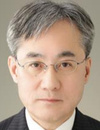 | Keynote Presentation Gene Therapy, Past, Present, and Future
Masafumi Onodera, Head, Department of Human Genetics, National Center for Child Health and Development, Japan
Almost 30 years ago, the first gene therapy clinical trial was conducted for severe combined immunodeficiency due to adenosine deaminase deficiency (ADA-SICD) in the US and Italy. Since then, the large number of gene therapy have been done and made steady progress despite of swings and roundabouts and currently proven to be a safe and effective therapeutic option for various intractable diseases such as primary immunodeficiencies, inherited metabolic disorders, hemoglobinopathy, inherited retinitis, hemophilia A and B, neuromuscular diseases, hematological malignancy, and some solid tumors. Furthermore, a new technology using genome editing for the diseases has been developed in rapid pace and applicable in clinical trials and then the definition of gene therapy may change from “therapy with a gene” to “therapy for a gene” in near future. Considering what coming from such a new technology sometimes carry unimaginable risks, however, the discussion from the wide angle including an ethical point of view should be needed to put into practice the new technology. From the point of this view, we have to ask ourselves “What can we do and What should we do” to future gene therapy. I would like to think and discuss the best course of action to the progress of gene therapy together in my presentation. |
| 09:10 | Virotherapy, Cell-based Therapy and Gene Therapy with Non-Replicating Oncolytic Virus Particle (HVJ-E/GEN0101) for the Treatment of Cancers
Toshihiro Nakajima, Senior Technical Executive and General Manager of Manufacturing, GenomIdea, Inc., Japan
Yasufumi Kaneda, Professor and Vice-President/Provost, Osaka University, Japan
HVJ-E/GEN0101 is an inactivated virus particle derived from murine parainfluenza virus HVJ (Hemagglutinating virus of Japan). It has been originally developed as a vector for gene therapy. We discovered the virus particle itself has an activity to induce cancer-cell specific apoptosis and necroptosis. It also induces innate and adaptive immunities necessary to attack cancer cells. The active ingredient is a single strand RNA fragment derived from genomic RNA of the virus. It binds to an intracellular nucleic acid receptor RIG-I and induces expressions of cytokines, chemokines and apoptosis-related genes in vitro and in vivo. We conduced safety studies using Cynomolgus monkeys and started investigator initiated clinical studies in Osaka University to develop HVJ-E as a new drug for cancer immune- and viro-therapies. To date five phase I or I/IIa investigator initiated clinical studies has been finished. The targets cancers are melanoma, prostate cancer and malignant pleural mesothelioma. In these studies, the safety, efficacy and mechanism of actions of the drug have been evaluated. No serious adverse event related to the drug was observed and safety of the drug is confirmed in clinical. Reduction and eradication of tumor lesions were observed in a dose dependent manner. Induction of innate and adaptive immunities after administration of HVJ-E was observed in clinical, suggesting that the efficacy is mediated by immune reactions. The efficacy is expected to be increased in combination with anti-PD-1 antibody therapy, we are now conducting two phase II studies of melanoma and malignant pleural mesothelioma for the evaluation of efficacy of combinational therapy.
In addition to cancer virotherapies, we are also conducting cell therapy and gene therapy of HVJ-E for the treatment of ovary and breast cancers, respectively. In the cell therapy, we prepare hybrid cells of dendritic cell (DC) and irradiated cancer cells derived from patients. HVJ-E is used for cell fusion, maturation of DC and induction of cancer immunities. Cancer antigens are directly captured by DC via membrane fusion between DC and irradiated cancer cells, and DC efficiently presents antigens to helper T cells. In the gene therapy, we use plasmid DNA expressing chemokine gene (CXCL2) to recruit neutrophils into tumor bed. Intratumoral injection of HVJ-E improve a tumor microenvironment by the induction of Type I neutrophils which suppress the growth of tumor.
To establish sustainable cycle (or system) to create innovative drugs in Osaka University, we are trying to bridge basic scientists, clinicians and researchers of companies. Osaka University applys and maintains patents of the seed of drugs in collaboration with companies as applicant to obtain appropriate royalty. Basic scientists and clinicians designed their investigator initiated clinical studies in collaboration, since custom-made design based on scientific data is necessary to develop innovative drugs. We also bridged academia and industries to conduct our phase II investigator initiated clinical studies. We are now trying to make collaboration scheme with pharmaceutical companies to complete sustainable cycle. | 09:40 | Gene Therapy For Neurological Diseases
Shin-ichi Muramatsu , Professor of Neurology, Jichi Medical University (JMU), Japan
Adeno-associated virus (AAV) vectors have been widely used for gene therapy. In Clinical studies on advanced Parkinson’s disease, investigators, including us, have shown the motor symptoms to be ameliorated along with an increased dopaminergic activity on positron emission tomography after gene transfer of aromatic L-amino acid decarboxylase (AADC) into the putamen. The beneficial effects of AADC gene transfer have also been shown in children with AADC deficiency. AAV vectors can achieve global transduction of the central nervous system by intravenous or intrathecal injection. We have been developing gene therapy for various diseases including sporadic amyotrophic lateral sclerosis, spinocerebellar ataxia 1, glucose transporter 1 deficiency, and GM2 gangliosidosis. | 10:10 | Morning Coffee and Tea Break and Networking | 10:40 | Tuning Cell Orientation based on Localized Geometry Sensing during Cell Sheet Formation by the Micromesh Culture Technique
Kennedy Okeyo, Senior Lecturer, Institute for Frontier Life and Medical Sciences, Kyoto University, Japan
Cell sheets are self-assembled cellular constructs with potential application to regenerative medicine and cell-based therapy. Indeed, ongoing researches have demonstrated the potential application of cell-sheets in the regeneration of the cornea, esophagus, etc, with promising results. However, for application to oriented tissues like the heart and muscle tissues, cell sheets with clearly defined global cell orientation is required. However, presently available cell sheet technologies cannot meet this task. Moreover, since the most widely employed cell sheet fabrication technique involves the use of temperature-responsive culture vessels and other similar culture platforms, cell sheet damage during harvesting from such sticky culture platforms presents a major obstacle. In this talk, we present a simpler and easy-to-implement cell sheet fabrication approach which utilizes adhesion-limiting micromeshes as inducers of self-assembly mediated solely by cell-cell adhesion in a suspension. We demonstrate that tuning the mesh microstructure, such as mesh shape and size, can enable us to control whole-sheet cell orientation, a process which occurs naturally based on geometry sensing capability of cells. We also show that cell sheets can be generated in a suspension, eliminating the need for expensive harvesting strategies. | 11:10 | Prostate Cancer Gene Therapy as Translational Research
Yasutomo Nasu, Professor, Okayama University, Japan
Prostate is an ideal target organ for the gene therapy as a translational research (TR). It has advantages as follows : prostate is not a life keeping organ, can be approached easily by ultrasound as a routine clinical technique and PSA is a potent tumor marked for the evaluation of clinical response. Many clinical gene therapy trials for prostate cancer have been conducted in many institutes showing clinical safety and efficacy including Japanese trial. Intraprostatic therapeutic gene transduction (in situ gene therapy) is one of the potent therapeutic option for prostate cancer gene therapy aiming at anti-metastatic benefits through the generation of immune cell-mediated cytotoxic activities that affect not only the primary tumor but also metastatic lesion. In this lecture, role of academia for the development of gene therapy as a translational research will be discussed base on our experience for 20 years. I would like to discuss about the present problem and future direction for the development of gene therapy. | 11:40 | Networking Lunch, Exhibit and Poster Viewing | 12:50 | Multidisciplinary Oncolytic Virotherapy for Gastrointestinal Cancer
Toshiyoshi Fujiwara, Professor & Chairman, Okayama University Graduate School of Medicine, Dentistry and Pharmaceutical Sciences, Japan
Telomelysin (OBP-301) is an attenuated oncolytic adenovirus, in which the telomerase promoter drives expression of E1 genes. Telomelysin causes selective replication and lysis of a variety of human cancer cells, and also inhibits the repair of radiation-induced DNA double-strand breaks, leading to radiosensitization. A phase I study has confirmed the safety and biological activity of Telomelysin alone in patients with advanced solid tumors in the US. To further determine the feasibility, efficacy, and pharmacokinetics of Telomelysin in combination with radiotherapy, an investigator-driven clinical study was designed. Patients with histologically confirmed esophageal cancer who were not eligible for surgery or chemotherapy were enrolled into this study. Study treatment consisted of intratumoral needle injections of Telomelysin on days 1, 18, and 32 of treatment. Radiation therapy was administered concurrently over 6 weeks, beginning on day 4, to a total of up to 60 Gy. Virus administration was performed by intratumoral injection of the primary tumor through a flexible endoscope. Patients receive escalating doses of Telomelysin (1010 to 1012 virus particles [vp]). Seven, three, and three patients were enrolled and treated in the cohorts with 1010, 1011, and 1012 vp of Telomelysin, respectively. The patients comprised 10 males and 3 females, with median age of 79.7 years (range, 53 to 92 years). Common grade 1 and 2 toxicities included fever, esophagitis, pneumonitis, anorexia, constipation, and gastroesophageal reflux disease. All patients developed a transient, self-limited lymphopenia. Objective responses were complete response (CR) in 4, 2, and 2 patients in cohort 1, 2, and 3, respectively; all of them exhibited pathologically no viable malignant cells in biopsy specimens. Histopathologic examination in post-treatment specimens showed massive infiltration of CD8+ cells in 3 partially responded tumors. Multiple courses of endoscopic Telomelysin injection with radiotherapy were feasible and well tolerated in patients with esophageal cancer, and appeared to provide clinical benefit. | |
Session Title: Emerging Themes and Advances in Cell & Gene Therapy |
| | 13:20 | Translational Medicine - Clinical Concerns re Expanding & Banking MSCs
Eugen Molodysky, Clinical Associate Professor, Sydney Medical School, University of Sydney, Australia
Stem cell-based therapies have proliferated globally in recent years with the US leading the world in total number of clinics, but Australia leading the US with the number of clinics per capita.
As stem cell therapies are being sort out for a growing range of applications, both clinical and healthy aging, clinicians are increasingly faced with the decision, as to whether a patient should proceed with a stem cell treatment. This is at a time when there are few, if any, evidence-based guidelines, as to when and whether stem cell therapy is a suitable option under a given set of conditions.
This paper seeks to review our current understanding of the MSC life cycle journeys; from the in vivo donor environment (first life), to the ex vivo culture environment (second life), and re-entry to the in vivo host environment (third life). This paper focuses both on the attendant risks of both expansion and administration of MSCs, by identifying morphological and genomic changes of the Second Life, and introducing a potential role for NAD+ and NAD+ - raising compounds during the MSC journey. | 13:50 | 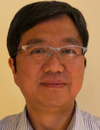 | Keynote Presentation Generation of Universal Donor Cell and its Application
Noboru Yamaji, President, Chief Intelligence and Liaison Officer, Universal Cells, Inc., An Astellas Company, United States of America
It is expected that “Cell” would be the modality which can cure patients suffered from diseases currently with no effective therapeutic option. One of the challenges for the industrialization and promotion of cell therapy is immune rejection. Universal cells, Inc. have developed HLA Knock-out type Universal Donor Cells (UDCs) from pluripotent stem cells, which express non-polymorphic HLA-E molecule for protection from NK cell-mediated “missing-self” cell lysis and a suicide gene for safety by using recombinant Adeno Associated Virus-mediated accurate and safe gene editing method. UDCs can be differentiated to any types of cells and then transplanted in patients without HLA-matching and potentially immunosuppressive treatment. UDCs also have advantages including higher consistency of cell therapy products (no donor-derived variability), reduced Cost of Goods (scalable manufacturing from one cell source), higher safety (no or reduced immunosuppression, more thorough analysis and quality management) and higher efficacy (better clinical trial design). Details of our approach for Universal Donor Cell and its application will be presented. |
| 14:30 | 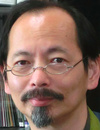 | Keynote Presentation Generation of CTLs from iPSCs Transduced with TCR Genes: Toward the Development of “Off-the-Shelf T Cells”
Hiroshi Kawamoto, Professor, Laboratory of Immunology, Institute for Frontier Life and Medical Sciences, Kyoto University, Japan
We have proposed a strategy to use iPSC technology for expansion of tumor antigen specific CTLs; iPSCs produced from T cells (T-iPSCs) inherit rearranged TCR genes, and thus all regenerated T cells from T-iPSCs express the same TCR. Based on this idea, we have succeeded in regenerating MART1-specific CTLs from a melanoma patient (Vizcardo et al, Cell Stem Cell, 2013). Recently we have developed a culture method by which CTLs expressing CD8alpha-beta heterodimer with high antigen specific cytotoxicity can be regenerated.
To apply this approach in allogeneic setting, we thought of a method in which non-T cell derived iPSCs are transduced with exogenous TCR genes (TCR-iPSCs). As a source of iPSCs, we decided to use HLA-haplotype homo iPSCs; regenerated cells from such iPSCs could be transplanted to HLA-hetero recipients. At present, top three frequent HLA-homo iPSC lines are available, covering 30% of the Japanese population. To test the idea of TCR-iPSCs, we lentivirally transduced non-T cell derived iPSCs with WT1-specific TCR gene cloned by our group from CTLs regenerated from WT1-T-iPSCs, which had originally been established from WT1-specific CTLs expanded from peripheral T cells of a healthy volunteer. Regenerated CTLs from TCR-iPSCs were found to exhibit cytotoxicity comparable to those from T-iPSCs carrying the same WT1-TCR, indicating that this strategy works well.
We applied this system to the TCRs that have been used in clinical trials in Japan. We transduced HLA-homo iPSCs with WT1-specific TCR that has been used in clinical trial of TCR gene transfer therapy against leukemia (Ehime University). Regenerated CTLs from WT1-TCR-iPSCs suppressed growth of WT1-expressing renal cell carcinoma cells in patient-derived xenograft model. We also applied this system to NY-ESO1-TCR that has been used in clinical trial targeting synovial sarcoma or melanoma (Mie University). Regenerated NY-ESO1-CTLs showed cytotoxicity against myeloma cells in xenograft model. These results collectively demonstrate the feasibility of the TCR-iPSC strategy against various types of cancer, including solid tumor. |
| 15:10 | 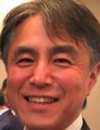 | Keynote Presentation Artificial Production of New Neurons in the Adult Central Nervous System
Kinichi Nakashima, Professor, Department of Stem Cell Biology and Medicine, Kyushu University, Japan
The body’s capacity to restore damaged neural networks in the injured central nervous system (CNS) is severely limited. Therefore, usefulness of neural stem cell (NSC) transplantation to replenish neurons has been extensively investigated, but because of gliogenic environment in the lesion site, effective neuronal production has not been satisfactorily successful. We have previously found that anti-epileptic drug valproic acid, also known as a histone deacetylase inhibitor, induced neuronal differentiation of NSCs, and reported that combinatorial treatment with VPA and NSC transplantation can supply newly generated neurons in injured spinal cord, leading to dramatic functional recovery after spinal cord injury (SCI). In the subsequent study, we have also shown that human iPSC-derived NSC, which are epigenetically restricted not to differentiate into glial cells, efficiently give rise to neurons in the injured spinal cord, inducing recovery of locomotor functions of mice after SCI. Although it is now understood that supply of new neurons has beneficial effects on the functional recovery, there still remain critical problems, such as tumorigenicity and time-consuming preparation of cells if we utilize iPSC-derived cells. As an alternative strategy to replenish new neurons in vivo, direct conversion from endogenous cells in non-neuronal lineages attracts much attention these days. We have recently found that microglia, which converge at lesion site after injury, can be converted to functional neurons both in vitro and in vivo by the expression of a single proneural transcription factor NeuroD1 (ND1). We also verified the molecular mechanisms of how ND1 provokes and suppresses neuronal and microglial programs, respectively. In this talk, I would like to introduce these our achievement and discuss future directions regarding treatments of CNS injuries. |
| 15:50 | Coffee Served and Panel Discussion: New Trends and Future Directions in Cell and Gene Therapy -- Chaired by Professor Norio Nakatsuji | 16:50 | Closing Remarks by Conference Chairman, Professor Norio Nakatsuji | 17:00 | Close of Conference |
|

 Add to Calendar ▼2019-11-11 00:00:002019-11-12 00:00:00Europe/LondonCell and Gene Therapy Asia 2019Cell and Gene Therapy Asia 2019 in Kobe, JapanKobe, JapanSELECTBIOenquiries@selectbiosciences.com
Add to Calendar ▼2019-11-11 00:00:002019-11-12 00:00:00Europe/LondonCell and Gene Therapy Asia 2019Cell and Gene Therapy Asia 2019 in Kobe, JapanKobe, JapanSELECTBIOenquiries@selectbiosciences.com